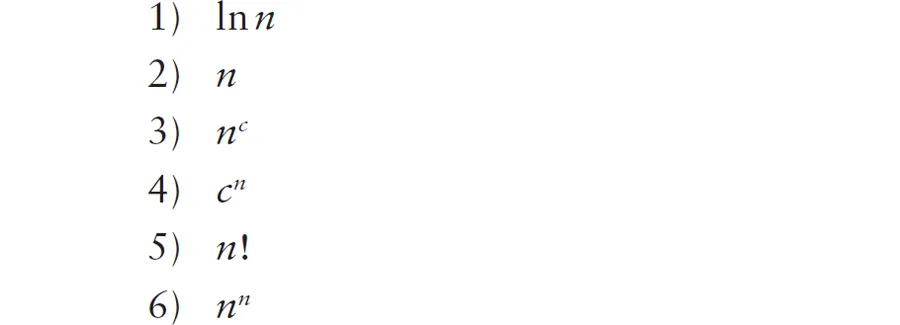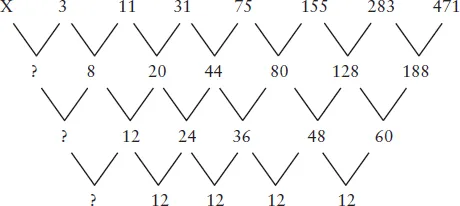![]()
SOLUTIONS
1
Remove one student from each bench, including the one with four students to make a new bench of eight students. There must be seven full benches in order to do this. Therefore, there were seven benches of nine students plus the four for 67 students.
Following that there are some other ways to this. First:
Let | n | = Number of benches needed when seating eight per bench |
| m | = Number of benches needed when seating nine per bench |
| s | = Number of students |
Writing the two equations for the numbers of students in terms of the seating on the benches, we have
s = 8n + 3
and s = 9m + 4.
Recognizing that the number of students is the same, we set the quantities equal:
8n + 3 = 9m + 4.
Then, noticing that n must be greater than m, we condense, to write
8n – 9m = 1.
Pulling out a common factor, we have
8(n – m) – m = 1.
Then, noticing that the quantity (n – m) is actually the difference in the number of benches used to seat the students (between the 8-per-bench and 9-per-bench approaches), we define the difference as
d = n – m.
Then, substituting the difference d and rearranging, we have
m = 8d – 1.
Substituting back in one of the original equations yields
s = 9(8d – 1) + 4, or
s = 72d – 5.
Since the number of students in a class must be a positive number, we see by inspection that d must be greater than 0. So, setting d to 1, to get the minimum number of students satisfying the equation, we have
s = 72(1) – 5 = 67
Minimum number of students = 67
Here is another way to solve this:
We know that 3 + 8x = 4 + 9y
subtract 8y from both sides
3 + 8(x – y) = 4 + y
The smallest value of (x – y) is 1
(since x is the = number of benches with eight students per bench and y is the number with nine per bench, so x > y because it will take fewer benches to seat more students)
So the smallest value is when (x – y) = 1 plug in the equation
3 + 8 = 4 + y
so y = 7.
That’s it!
x + 3 = y + 4
or x – y = 1
which, according to what I said above, is the smallest positive difference in the number of benches!
2
5/8. When you switch the marbles to their new boxes, you have the probability of having
W and BW or
B and WW
In the four cases,
1/4 the time you get a white marble by choosing A. 1/4 the time you get a white marble from choosing D. In the case of choosing B, you get a white marble 1/2 of 1/4 or 1/8 the time.
Total probability of a white marble: 1/4 + 1/4 + 1/8 = 5/8.
3
The watermelons weigh 100 kg at the end of the day. In the morning, the 200 kg of watermelons are 99% water. So the non-water part of the watermelons has a mass of 2 kg. At the end of the day, the melons are 98% water. The remaining 2% is still the 2 kg of non-water material (which does not change when the water evaporates). If 2% equals 2 kg, then 100% equals 100 kg. So, Molly has 100 kg of watermelons left at the end of the day.
4
From lowest to highest value:
5
–5. One way to solve this is to examine the difference between the numbers to see if a pattern develops.
Once you see a pattern, then work your way back to the top to find the first number. Keep in mind when finding the differences between numbe...



